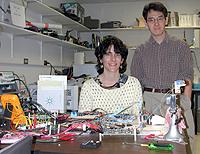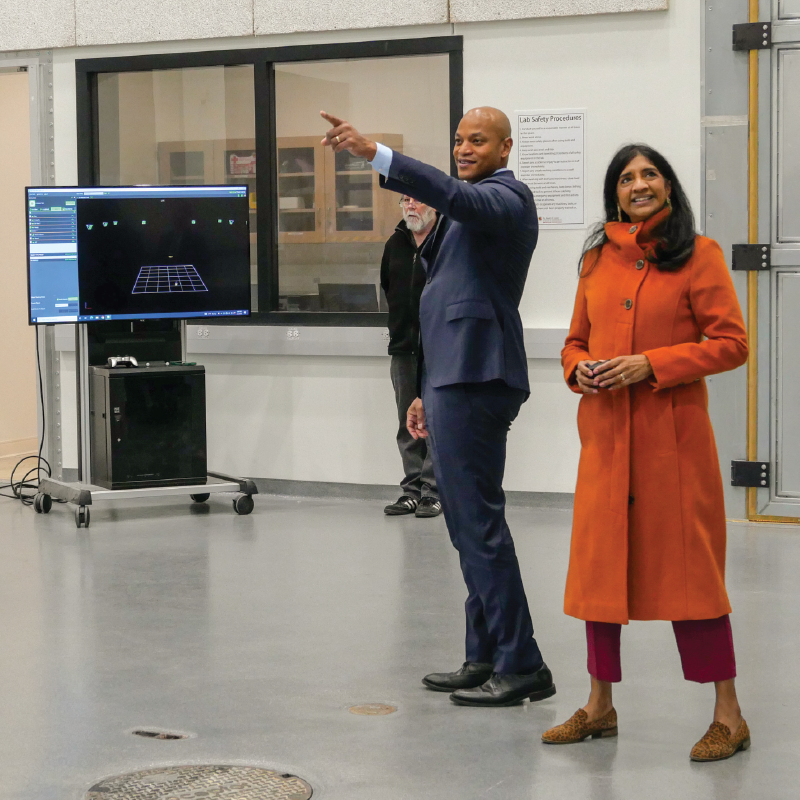News Story
Moss, Horiuchi win $1.6 million NIH grant

Professor Cynthia Moss (Psychology/ISR) and Assistant Professor Timothy Horiuchi (ECE/ISR) have received a five-year, $1.6 million grant from the National Institutes of Health's Division of Neuroscience and Basic Behavioral Science, part of the National Institute of Mental Health.
The grant is for their work in "Dynamic Sensorimotor Control for Spatial Orientation." It will advance understanding of the integration of auditory information with motor programs for spatially-guided behavior in mammals. It will also advance general understanding of auditory information processing and adaptive motor control for spatial orientation. The abstract is below.
Abstract
Spatially-guided behaviors are central to the healthy functioning of humans, and a broader knowledge of sensorimotor integration will facilitate treatment and rehabilitation when it fails to develop normally or breaks down through disease. Individuals with impaired visual function depend largely on audition to direct their movements, and yet surprisingly, blind individuals may show impaired audiomotor integration, perhaps because they lack the visual input normally used to calibrate this sensorimotor feedback system.
To date, little research effort has been directed at understanding the integration of auditory information with motor programs for spatially-guided behavior in mammals, and the studies described in this proposal will yield data that advance our general understanding of auditory information processing and adaptive motor control for spatial orientation.
Combining behavioral and neurophysiological experiments, the proposed research program exploits the acoustic imaging system of the echolocating bat, an animal that relies on the spatial analysis of dynamic auditory scenes to guide its behavior.
Three inter-related lines of research are proposed 1) We plan a series of experiments with free-flying echolocating bats engaged in complex spatial tasks, designed to study spatial localization, tracking and obstacle avoidance. 2) We plan neural recording experiments from the midbrain of the bat as it listens to synthesized acoustic stimuli that mimic the dynamic characteristics of sonar signals used for insect capture. We will also record from the midbrain of tethered animals that are actively engaged in echolocation behavior on a platform, allowing us to study both premotor and auditory evoked activity. These experiments will allow us to examine how the bat's sonar signal production shapes auditory responses to echoes. 3) Finally, we will collect, analyze and interpret the first CNS recordings from a free-flying echolocating bat. Our approach is motivated by important results from other systems, which demonstrate that spatio-temporal activity patterns in the nervous system can depend on behavioral state, task and context. Together, these studies have wideranging impact for neuroscience, biological research techniques, robotics design, control theory and the development of assistive medical devices.
Published February 3, 2004









